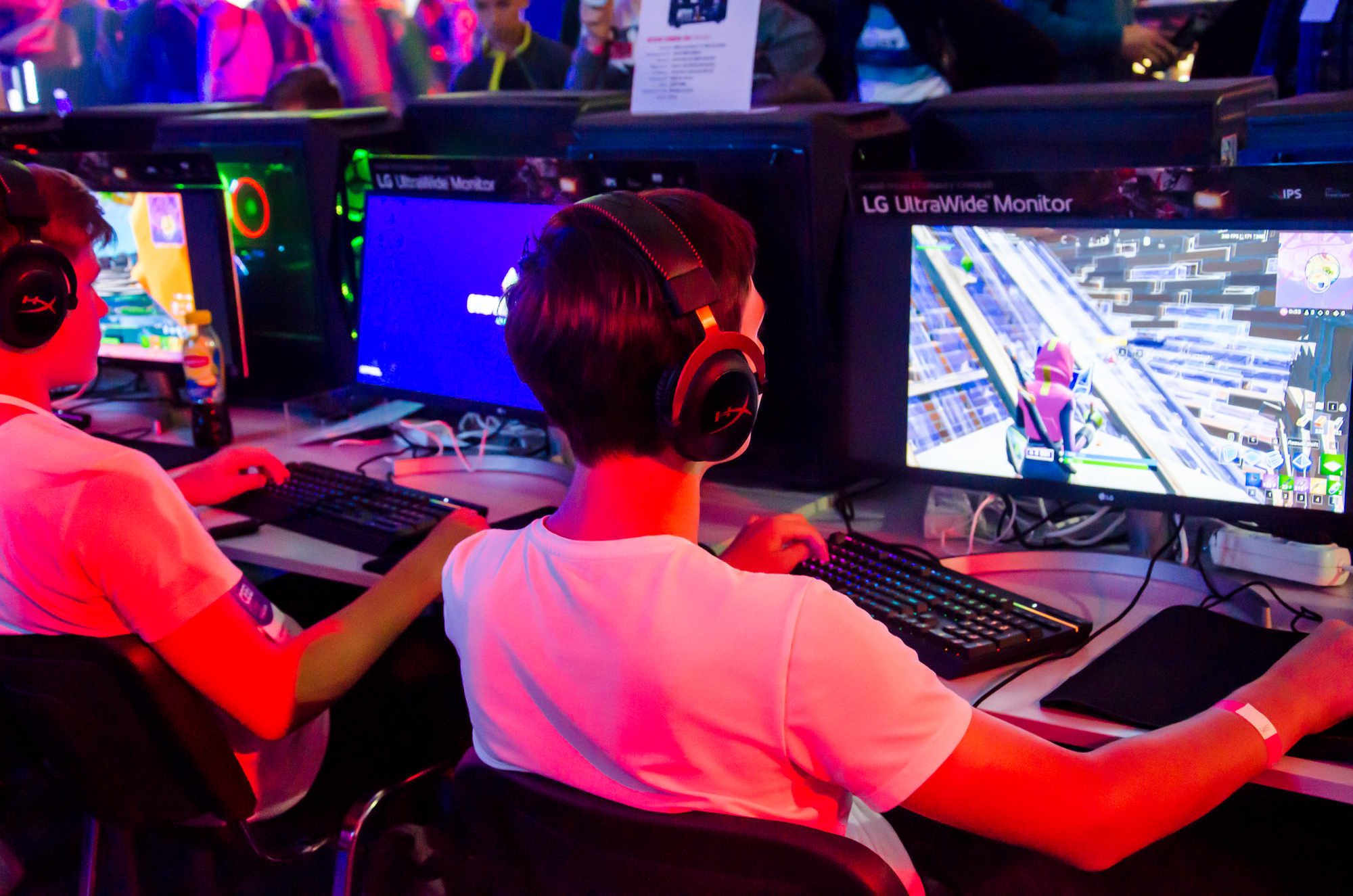The gaming industry has significantly influenced consumer behavior in recent years. As gaming becomes more mainstream, it’s shaping how people spend their time and money. Global gaming revenue is expected to reach $218.7 billion by 2024, reflecting the industry’s growing impact on consumer habits.
Gaming’s influence extends beyond entertainment. It’s changing how people interact socially, make purchasing decisions, and engage with technology. The rise of mobile gaming has made games more accessible, attracting a wider demographic of players and expanding the industry’s reach.
Consumer expectations are evolving alongside gaming trends. Players now seek immersive experiences, social connectivity, and personalized content. This shift is driving innovation in game design and marketing strategies, as companies strive to meet these new demands and retain player engagement.
Evolving Consumer Behavior in Digital Gaming
Digital gaming trends have shifted dramatically in recent years, influenced by technological advancements and global events. Consumers are embracing new platforms and gaming models, reshaping the industry landscape.
Impact of the Pandemic on Gaming Patterns
The COVID-19 pandemic accelerated existing trends in digital gaming. As people spent more time at home, gaming became a popular form of entertainment and social connection. Many individuals who previously did not engage with video games began playing regularly.
This surge in gaming activity led to increased sales of consoles, games, and in-game purchases. Online multiplayer games saw a significant boost in player numbers, as they offered a way to interact with friends and family remotely.
The pandemic also sparked interest in cloud gaming services, allowing players to access high-quality games without expensive hardware. This trend has continued post-pandemic, with many consumers maintaining their gaming habits.
The Rise of Mobile and Smartphone Gaming
Smartphone gaming has become a dominant force in the digital gaming market. The accessibility and convenience of mobile devices have attracted a wide range of consumers, from casual to dedicated gamers.
Mobile games now account for a substantial portion of the gaming industry’s revenue. Many traditional game developers have shifted their focus to creating mobile versions of popular titles or developing mobile-first games.
The improvements in smartphone technology, including better processors and displays, have enabled more sophisticated mobile games. This has blurred the lines between mobile and console gaming experiences.
Social media integration in mobile games has also contributed to their popularity, allowing players to easily share achievements and compete with friends.
Free Versus Paid-For Gaming Dynamics
The gaming industry has seen a shift in monetization models, with free-to-play games gaining significant traction. These games often generate revenue through in-app purchases, advertisements, or optional premium content.
Free-to-play games have lowered the barrier to entry for many consumers, allowing them to try games without upfront costs. This model has proven successful in attracting large player bases and generating substantial revenues.
Paid games continue to have a place in the market, especially for high-quality, story-driven experiences. Some consumers prefer to pay once for a complete game rather than deal with microtransactions.
Subscription-based gaming services have emerged as a middle ground, offering access to a library of games for a recurring fee. This model appeals to consumers who want variety without the need to purchase individual titles.
Technological Advancements and Gaming Infrastructures
Gaming technology continues to evolve rapidly, transforming how people play and interact with games. Cloud gaming, 5G networks, and console innovations are reshaping the gaming landscape.
Growth of Cloud Gaming and Streaming Services
Cloud gaming platforms allow players to stream games directly to their devices without needing powerful hardware. This technology eliminates the need for expensive gaming PCs or consoles. Major tech companies like Google, Microsoft, and Amazon have launched cloud gaming services. These platforms offer instant access to large game libraries and seamless play across multiple devices.
Cloud gaming faces challenges like latency and bandwidth requirements. As internet infrastructure improves, these issues are becoming less problematic. The convenience and accessibility of cloud gaming are attracting new players to the market.
5G as a Game-Changer for Mobile Gaming
5G networks provide faster speeds and lower latency for mobile devices. This improved connectivity enhances mobile gaming experiences. 5G enables more complex multiplayer games on smartphones and tablets. It also supports augmented reality (AR) games that blend digital elements with the real world.
Mobile game developers are creating titles that take advantage of 5G capabilities. These games feature better graphics, larger game worlds, and more simultaneous players. As 5G coverage expands, mobile gaming is likely to see significant growth and innovation.
Innovations in Console Gaming
Console manufacturers continue to push technological boundaries. The latest generation of consoles offers features like 4K resolution, high frame rates, and ray tracing for improved graphics. Solid-state drives (SSDs) in new consoles dramatically reduce loading times.
Virtual reality (VR) headsets are becoming more integrated with console ecosystems. This technology provides immersive gaming experiences. Console makers are also focusing on backward compatibility, allowing players to access games from previous generations.
Cross-platform play is gaining traction, enabling console gamers to play with PC and mobile users. This feature expands player communities and extends the lifespan of multiplayer games.
Commercial Strategies and Monetization
Gaming companies employ various tactics to generate revenue and engage players. These approaches include integrating advertisements, partnering with brands, and offering subscription-based services.
In-Game Advertising and Brand Partnerships
In-game advertising has become a significant revenue stream for game developers. Companies place ads within game environments, aiming to blend seamlessly with the gameplay experience. These ads can appear as billboards in racing games, product placements in sports titles, or sponsored items in mobile games.
Brand partnerships extend beyond traditional advertising. Game developers collaborate with popular brands to create themed content or limited-time events. This strategy benefits both parties – brands gain exposure to engaged audiences, while games receive fresh content and additional income.
Some games feature virtual storefronts where players can purchase branded items for their characters. This approach combines monetization with player customization, appealing to gamers who want to express themselves through in-game appearances.
Bundling Gaming with Mobile Subscriptions
Mobile carriers have started including gaming services as part of their subscription packages. This strategy aims to attract and retain customers by offering added value beyond standard cellular services.
Bundled gaming subscriptions typically provide access to a library of mobile games or cloud gaming platforms. Users can enjoy premium titles without additional purchases, increasing the perceived value of their mobile plan.
This approach benefits game developers by expanding their user base and providing a steady revenue stream. It also introduces gaming to a broader audience who might not have sought out these experiences independently.
The Shift to Gaming Subscriptions Models
Subscription-based gaming services have gained popularity in recent years. These platforms offer access to a large library of games for a fixed monthly fee, similar to streaming services for movies and TV shows.
Game subscription services can include:
- Access to a rotating selection of games
- Early access to new releases
- Exclusive in-game content
- Cloud gaming capabilities
This model provides a consistent revenue stream for gaming companies and can lead to increased player engagement. Subscribers often explore a wider variety of games, potentially discovering new favorites they might not have purchased individually. For players, subscriptions can offer better value compared to buying individual games, especially for those who enjoy trying different titles regularly. However, this model may not appeal to gamers who prefer to own their games outright or those who play a limited number of titles for extended periods.
The Gaming Industry’s Role in Shaping the Metaverse
The gaming industry plays a significant part in developing and popularizing metaverse technologies. Gaming companies are at the forefront of creating immersive virtual worlds and social experiences that form the foundation of the metaverse concept.
Consumer Segments Engaging with the Metaverse
Different consumer groups interact with metaverse-like environments in various ways. Younger generations, particularly Gen Z and Millennials, show high adoption rates for virtual worlds and digital assets. These users often engage in social gaming, avatar customization, and virtual item purchases.
Older adults are gradually exploring metaverse spaces, often drawn in by work-related applications or virtual events. Some consumer segments focus on specific aspects of the metaverse, such as digital art collectors interested in NFTs or tech enthusiasts experimenting with VR hardware.
Gaming companies target these diverse groups with tailored experiences and marketing strategies. They create age-appropriate content and features to appeal to different demographics within the metaverse ecosystem.
Live Gaming and Esports Experiences
The gaming industry leverages live events and esports to enhance metaverse engagement. Virtual concerts within game worlds attract millions of viewers, blending music and gaming cultures. These events showcase the potential for large-scale social interactions in digital spaces.
Esports tournaments increasingly incorporate metaverse elements, allowing spectators to watch matches from virtual arenas. Fans can interact with each other and participate in side activities, creating a more immersive viewing experience.
Game developers are expanding these concepts by hosting persistent virtual worlds where players can socialize, compete, and attend events. These platforms serve as prototypes for more complex metaverse environments, pushing the boundaries of online interaction and commerce.











